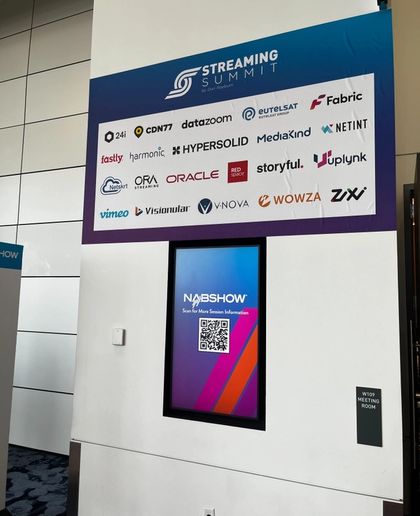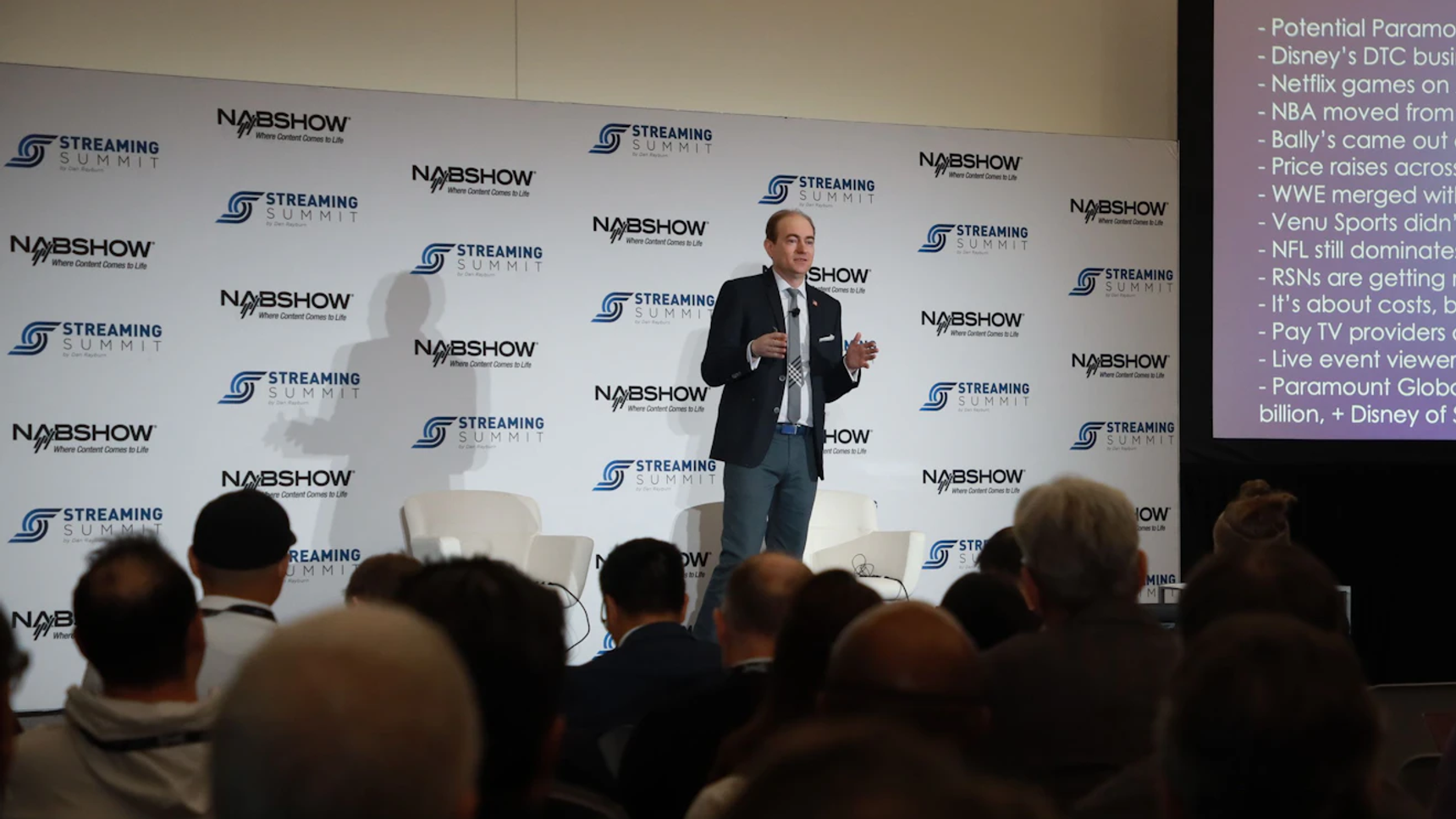
Sander de Vries
Business Director of Media Technology
17 Apr 2025, 4 min
Key takeaways from NAB Show Las Vegas 2025
Introduction
NAB Show 2025 in Las Vegas wrapped up last week. One thing that stood out about this year’s show is that attendance and the educational offering were both a bit thinner than in previous years. Whether it’s ongoing economic pressures in the industry or a growing reluctance by some global companies to fly to the US right now amid growing geopolitical tensions, the vibe was a little quieter than usual.
But while the crowd was lighter, it was still a good moment to get a view of what’s going on in the industry. The conversation this year mostly centered around cost savings. The hype cycle around AI that we saw in full swing at last year’s NAB Show has now entered a new phase: AI is reaching maturity step by step, and we’re seeing lots of new products entering the market. Only time will tell which ones have staying power.
Here are five real takeaways from NAB Show Las Vegas 2025.
1. Excitement around the launch of Dolby OptiView
Our partner, Dolby Laboratories, used the NAB Show to officially roll out Dolby OptiView, their all-in-one suite combining streaming, playback, and advertising tools. This is the first big public-facing result of Dolby’s 2024 acquisition of THEO Technologies (the makers of THEOplayer and THEOlive).
OptiView is purpose-built for live sports and entertainment, with low-latency streaming and server-guided ad insertion (SGAI) built in. It will allow streamers to create immersive, interactive live experiences with quality and precision, including Dolby Vision. This could open the door to a new level of editorial agility, such as in-stream editorial controls like dynamic overlays, real-time multiview, and mid-broadcast graphic switching.

Media, streaming, and content technology united at NAB Show 2025 in Las Vegas

The West Hall lobby hosted the Streaming Summit on April 7–8
2. NETINT: Making encoding smarter and cheaper
Reducing encoding costs and doing more with less is a major priority for streaming platforms right now. That’s why NETINT made a strong impression with their ASIC-based cards, especially the T408 and Quadra lines, which they presented during their keynote at Dan Rayburn’s Streaming Summit, part of the NAB Show.
NETINT’s new cards deliver solid AV1 and HEVC performance while using less power and rack space than traditional CPU or GPU setups. By offloading heavy video processing to dedicated silicon, companies will save energy, free up compute, and simplify infrastructure. It’s a real opportunity for platforms to scale more efficiently. At Hypersolid, we’re currently testing this technology with a few partners to see how it fits into different workflows. So far, it looks promising.
3. Smarter ad-supported models are taking shape
The return of ad-supported streaming isn’t new, but expectations around how ads are delivered are changing fast. Viewers are tired of annoying interruptions and irrelevant spots. At NAB Show, Server-Guided Ad Insertion (SGAI) came up again and again as a way to make ad delivery more intelligent and less disruptive.
SGAI gives publishers more control inside the stream itself. That opens the door for features like mid-roll overlays, real-time sponsor swaps, or even subtle editorial changes, all without sending the viewer to a separate ad break.
One of our partners, Scalstrm, is also jumping into SGAI, and the field is clearly heating up. Vendors are starting from different places (some with playback roots, others with ad tech backgrounds), but they’re all aiming at the same goal: more engaging, less intrusive, and more profitable live content.
There’s a lot of room to innovate here, and not just for monetization. Done right, this tech can improve the viewing experience instead of interrupting it.

Conference Chairman Dan Rayburn welcomes attendees to the Streaming Summit
4. Creators and broadcasters are learning from each other
The divide between traditional broadcasters and digital-native creators continues to shrink. At NAB Show, you could see signs that both sides are borrowing from each other’s playbooks.
Social-first creators are now commanding huge global audiences by being fast, personal, and platform-native. Broadcasters are taking notice. At the same time, creators are starting to embrace the structure and scalability that broadcasters have long relied on (things like storytelling discipline, consistent production workflows, and regulatory know-how).
Broadcasters are now looking to boost their relevance by paying attention to what makes creator content unique. On the other side, creators are looking to level up their production quality and operations, so they can grow beyond solo channels.
5. Cloud tools are reshaping live production
Lastly, another big trend at NAB Show 2025 was the ongoing convergence of content creation and distribution. Workflows that used to require physical infrastructure (like control rooms and OB vans) are now possible using browser-based, cloud-native tools.
Platforms like MXMZ Media are making it easier for teams to insert live graphics, manage multiview feeds, and switch streams directly from the cloud. This shift means post-production and live teams can collaborate in real time, across locations, without the need for heavy infrastructure.
As a result, production companies are gaining more control over how their content is distributed, and distribution teams are playing a more active role earlier in the creative process. It’s a positive sign that new technologies and ways of working will improve flexibility and lower costs going forward.
Moving on from NAB Show 2025
NAB Show 2025 confirmed that AI is moving to real-world applications. That’s why we decided to devote our presentation at NAB Show to the topic of building AI-driven media apps. Our colleague James Milton presented real-world use cases and talked about how to balance automation with editorial control to create smart, scalable workflows.
NAB Show 2025 also showed the real potential of ad-supported models and cloud-native tools to improve the way content is produced and delivered. We also thought it was great to see more creators and broadcasters finding common ground, and infrastructure innovations like NETINT, which will help bring down costs without sacrificing quality.
At Hypersolid, we’re working closely with partners like Dolby and Scalstrm to explore these new technologies and help our clients stay ahead of the curve. If you’d like to dive deeper into any of these trends, feel free to reach out or connect with Sander de Vries, who was on the ground at NAB Show Las Vegas.
Solid change starts here
Perspectives

